
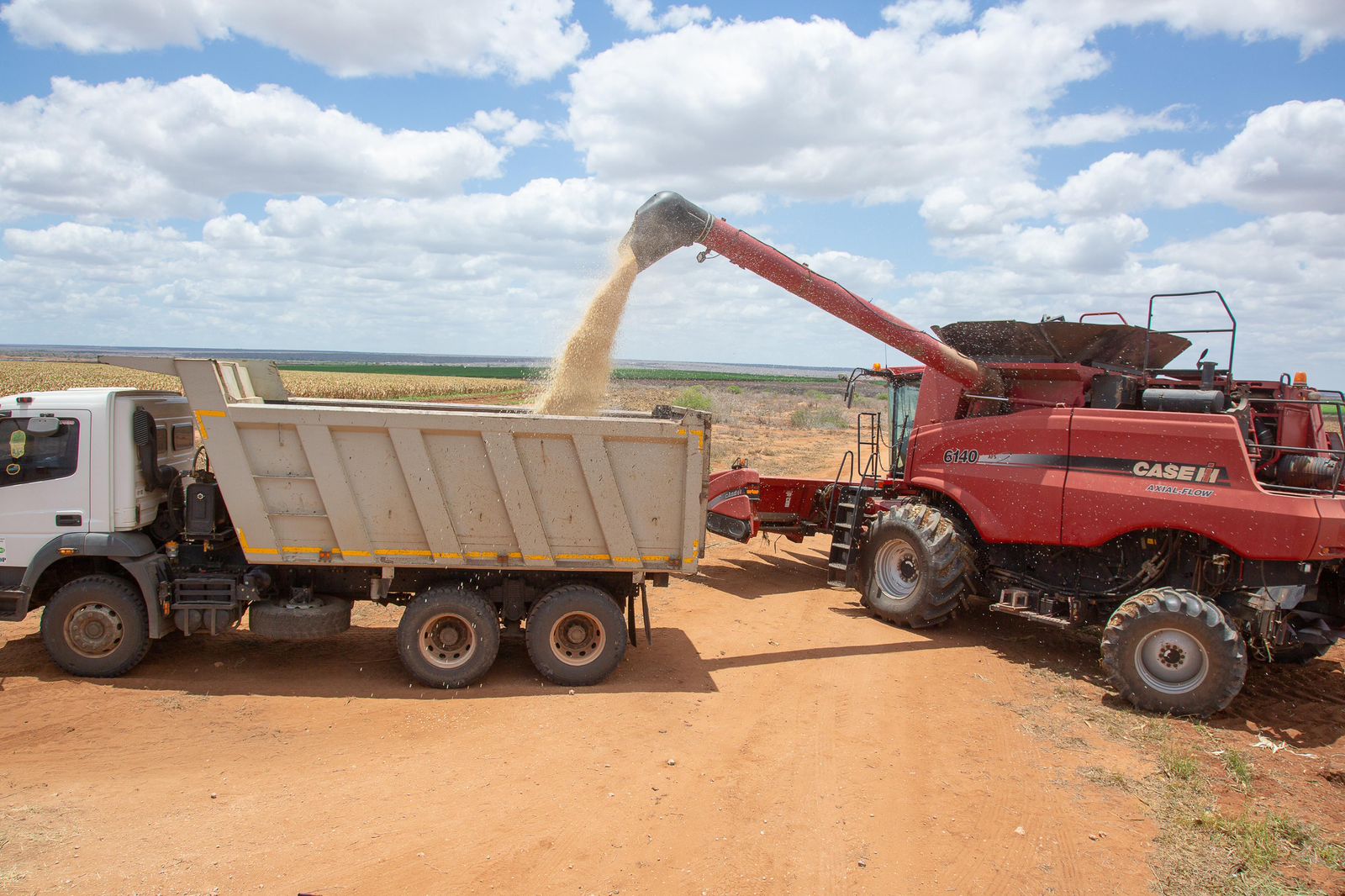 Galana-Kulalu/PCS
Galana-Kulalu/PCSKenya has begun reaping the rewards of its flagship food security initiative, with the first maize harvest at the Galana-Kulalu irrigation project officially launched on Saturday.
Water and Irrigation Cabinet Secretary Eric Mugaa presided over the harvesting of a 330-acre maize plantation, describing the event as a major milestone in the country’s journey toward agricultural self-sufficiency.
Speaking at the farm, Mugaa hailed the development as a significant step toward fulfilling President William Ruto’s vision of making Kenya self-reliant in food production.
“Finally, this project has come to fruition. There is a time to plant and a time to harvest. The seed maize we planted in May this year is being harvested today,” said Mugaa.
“This is a programme that we have talked about for many years. The Galana-Kulalu project is proof that Kenya can produce enough food for its people and reduce our import bill of more than Sh500 billion annually.”
The Galana-Kulalu project, located on the border of Kilifi and Tana River counties, had long been touted as the cornerstone of the country’s journey toward food self-sufficiency.
However, years of stalled works, mismanagement, and controversy saw it nearly abandoned, earning the unflattering label of a “ghost project.”
That narrative is now changing.
Under President William Ruto’s administration, the once-struggling initiative has been revived, with significant progress already visible on the ground.
“The project was at risk of stalling before President Ruto’s government embarked on its revival,” Mugaa noted.
According to the CS, harvesting of this first batch of the 330 acres will be done over the next five days.
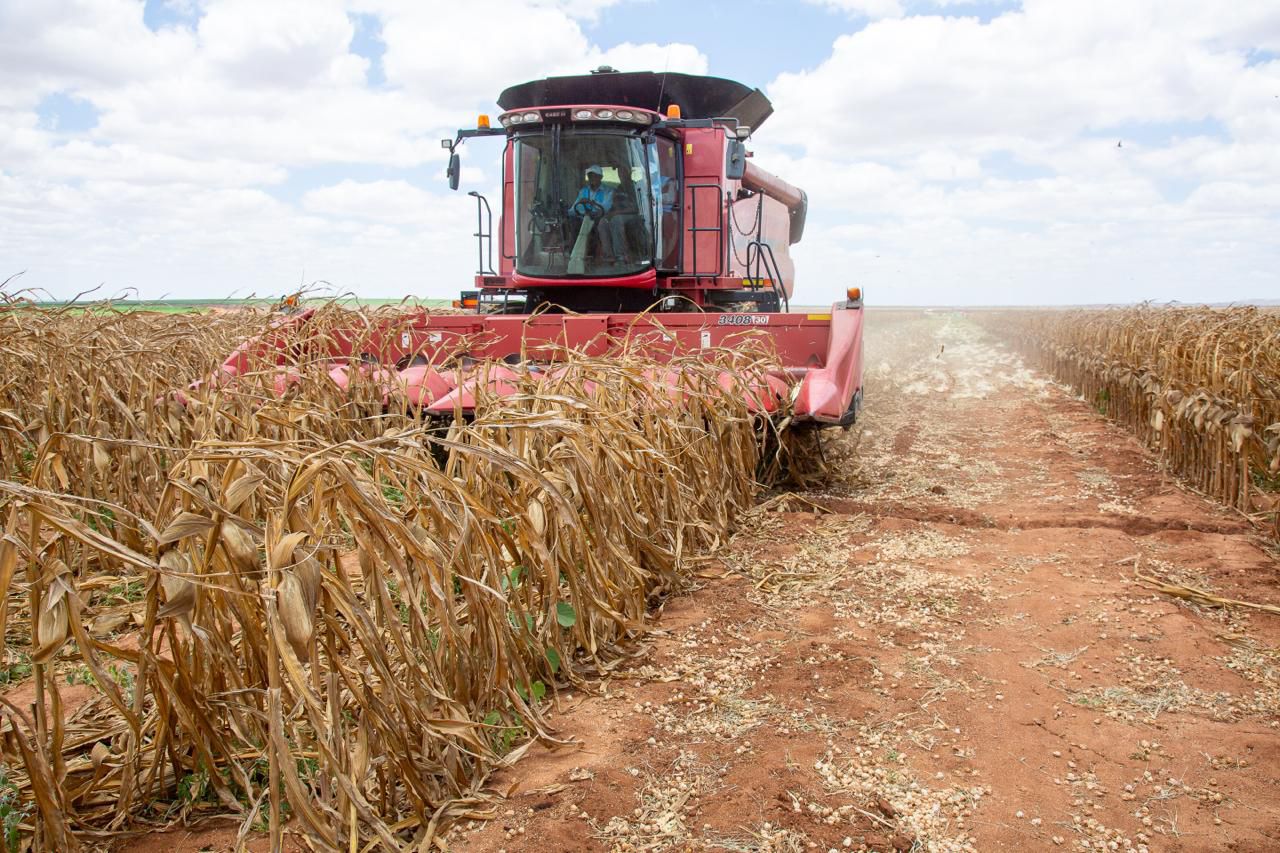
So far, 1,500 acres are under active cultivation, with expansion to 3,200 acres planned by the end of this year.
“By next year, another 11 pivots will be activated, bringing a total of 5,400 acres under irrigation,” he said.
The long-term target, he said, is to irrigate 10,000 acres in this phase, before scaling up to 200,000 acres once the Galana Dam is constructed.
To achieve these goals, the government has invested Sh519 million in a new water intake, pumping systems, canals, and two small dams to guarantee reliable irrigation.
The two dams have a combined capacity of 620,000 cubic metres of water, enough to sustain farming even in case of a disruption at the intake.
“We built the system with double redundancy to ensure that irrigation continues even when there’s a challenge at the intake,” Mugaa explained, adding they have also introduced filtration structures to reduce siltation and maintain water quality.
Currently, the project operates under nine centre pivots, but by the end of the year, 20 pivots will be running, with another 11 to be installed in 2026.
“The total acreage we aim to have under production by the end of the year is 3,200 acres,” Mugaa said.
“With the 1,500 acres already producing, we are on track to reach that goal.”
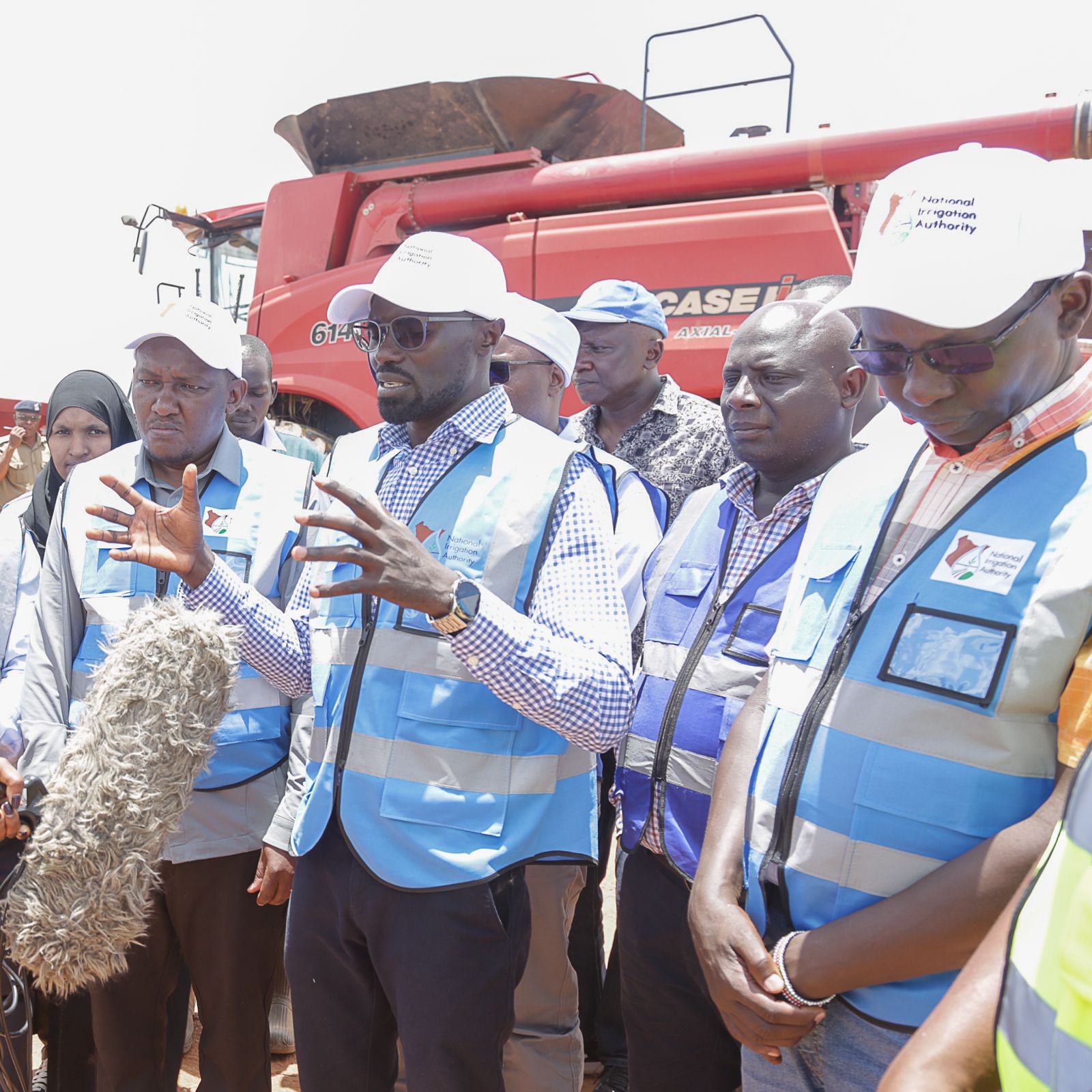 Water Cabinet Secretary Eric Mugaa with Principal Secretary Ephantus Kimotho and Marakwet East MP Kangogo Bowen with other leaders at Galana-Kulalu farm on October 11, 2025/PCS
Water Cabinet Secretary Eric Mugaa with Principal Secretary Ephantus Kimotho and Marakwet East MP Kangogo Bowen with other leaders at Galana-Kulalu farm on October 11, 2025/PCS The CS added that the project is also providing employment to local communities, with more than 500 residents already working on-site as machine operators, field workers, and technicians.
“This project is not only about food, it is also about livelihoods. People in this region are learning new skills and earning income from the project,” he said.
National Assembly’s Blue Economy and Irrigation Committee chairperson Kangogo Bowen, who was also present, commended the progress, saying Parliament is committed to supporting the government’s efforts to expand irrigation and attract investment.
“This financial year, we have allocated Sh123 million to support enabling infrastructure for Galana-Kulalu,” said Bowen.
He said they also intend to develop a legal and regulatory framework to attract more investors to such strategic projects.
The project is being implemented under a Public-Private Partnership (PPP) model with Selu Africa, an Israeli agricultural technology firm.
According to Water and Irrigation Principal Secretary Ephantus Kimotho, the partnership brings technology, business discipline, and operational efficiency to the venture.
“We have enlisted the private sector to bring technology and efficiency,” Kimotho said.
He said the goal is to make Galana-Kulalu a reference point for modern, sustainable agriculture in Kenya.
President Ruto has personally championed the Galana-Kulalu project as a cornerstone of his administration’s agricultural agenda.
“Galana-Kulalu must succeed,” Ruto said in 2023 when announcing the project’s revival.
"We will lay down the necessary infrastructure to make this project a reality.”
The President’s vision is already taking shape. The turnaround began when he ordered the construction of a 753-metre inlet canal, a 450-million-litre reservoir, a 1,210-metre outlet canal, and a 20-million-litre off-take sump, which have since been completed and are now operational.
In May this year, Ruto visited the project and declared that Kenya had “talked long enough” about Galana-Kulalu and it was time for results.
“This project is part of our government’s commitment to rid the country of the shame of hunger,” he said.
"We will use it to grow food, create jobs, and generate products for export.”
Kenya currently faces a maize deficit of 10 to 15 million bags annually.
Officials estimate that by putting 200,000 acres under irrigation at Galana-Kulalu, the country could produce up to 14 million bags of maize a year, effectively closing the gap and eliminating the need for imports.
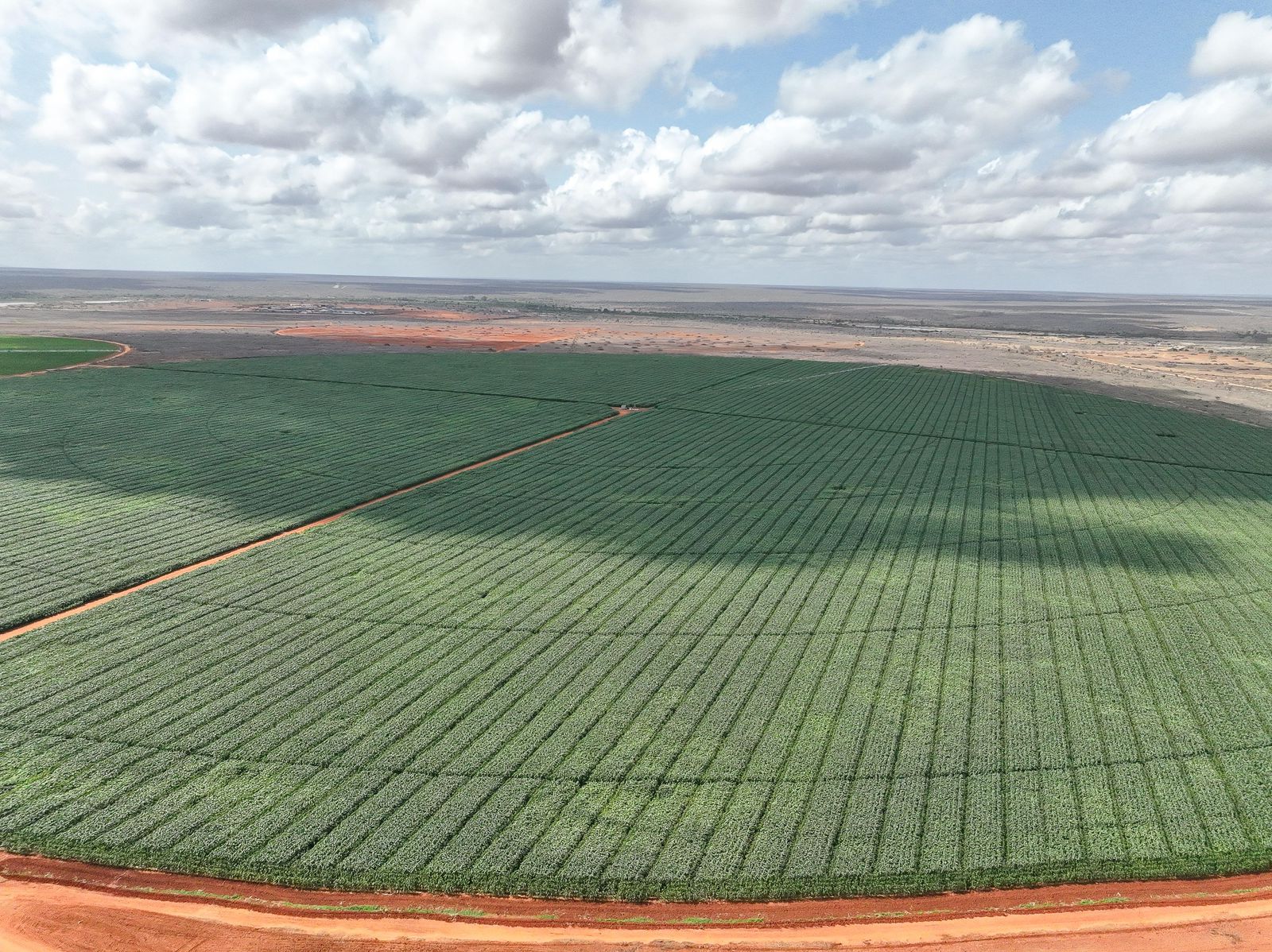
The project is also expected to bolster the country’s foreign exchange reserves, stabilise the shilling, and promote agro-based industrial growth by providing reliable raw materials for processing.
“Aside from food security, this project supports our economy,” Mugaa said.
“It shows what can be achieved when government, Parliament, and private partners work together under one vision.”
Current yields average 28 to 30 bags per acre, meaning the 1,500 acres under cultivation could produce over 40,000 bags this year.
The long-term plan for the Galana-Kulalu region includes construction of the Galana Dam, located about 40 kilometres away.
Once complete, it will supply enough water to irrigate over 200,000 acres, unlocking even greater potential for commercial agriculture.
“If we can achieve this with Sh519 million, imagine what is possible with that vision fully realised.”
The people who conceptualised this project had a vision ahead of their time,” Mugaa reflected.
"It only took the right team to come together to unlock it. This is a successful story of a public-private partnership and national determination.”






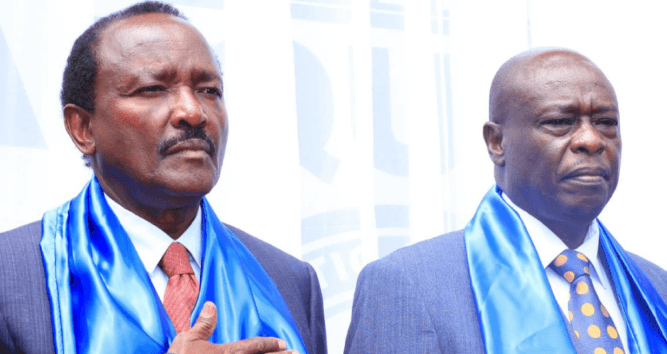



![[PHOTOS] Ruto launches Rironi-Mau Summit road](/_next/image?url=https%3A%2F%2Fcdn.radioafrica.digital%2Fimage%2F2025%2F11%2F6f6601a6-9bec-4bfc-932e-635b7982daf2.jpg&w=3840&q=100)




